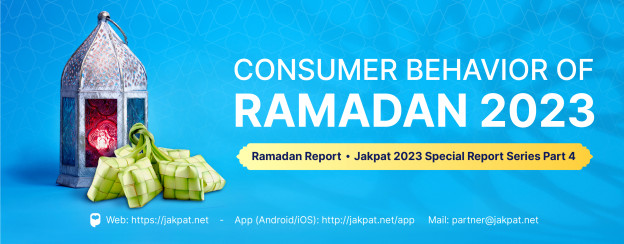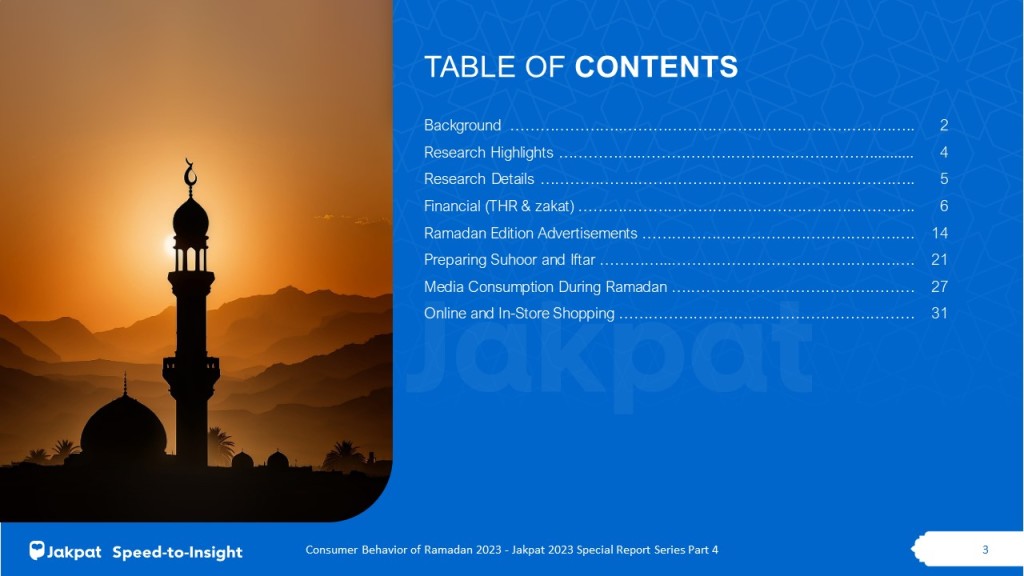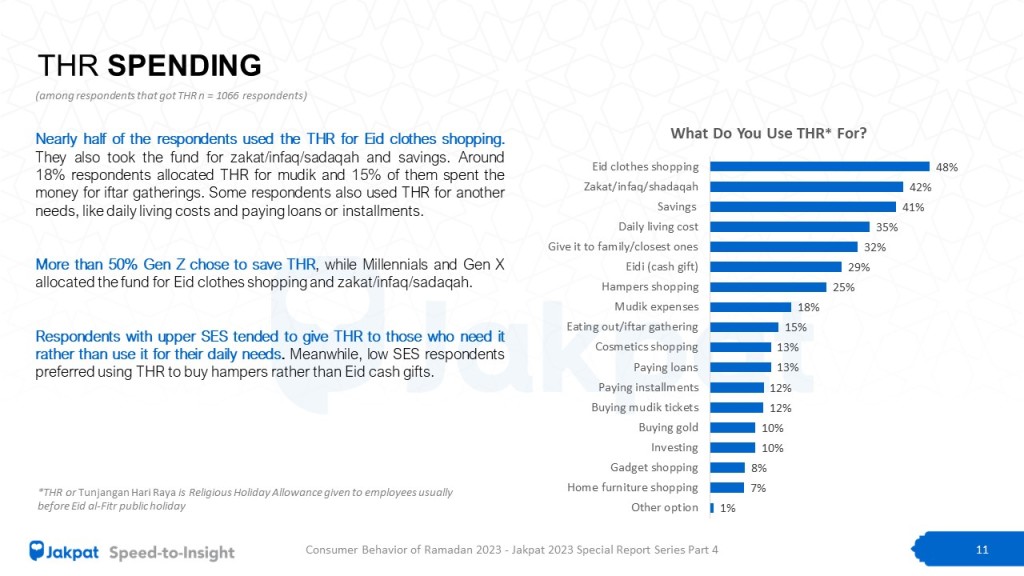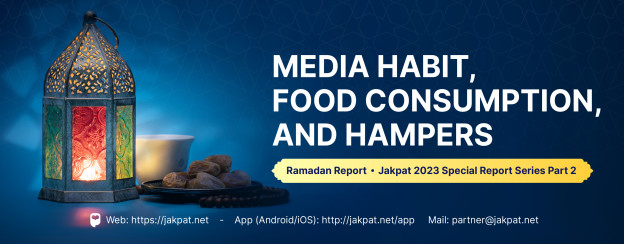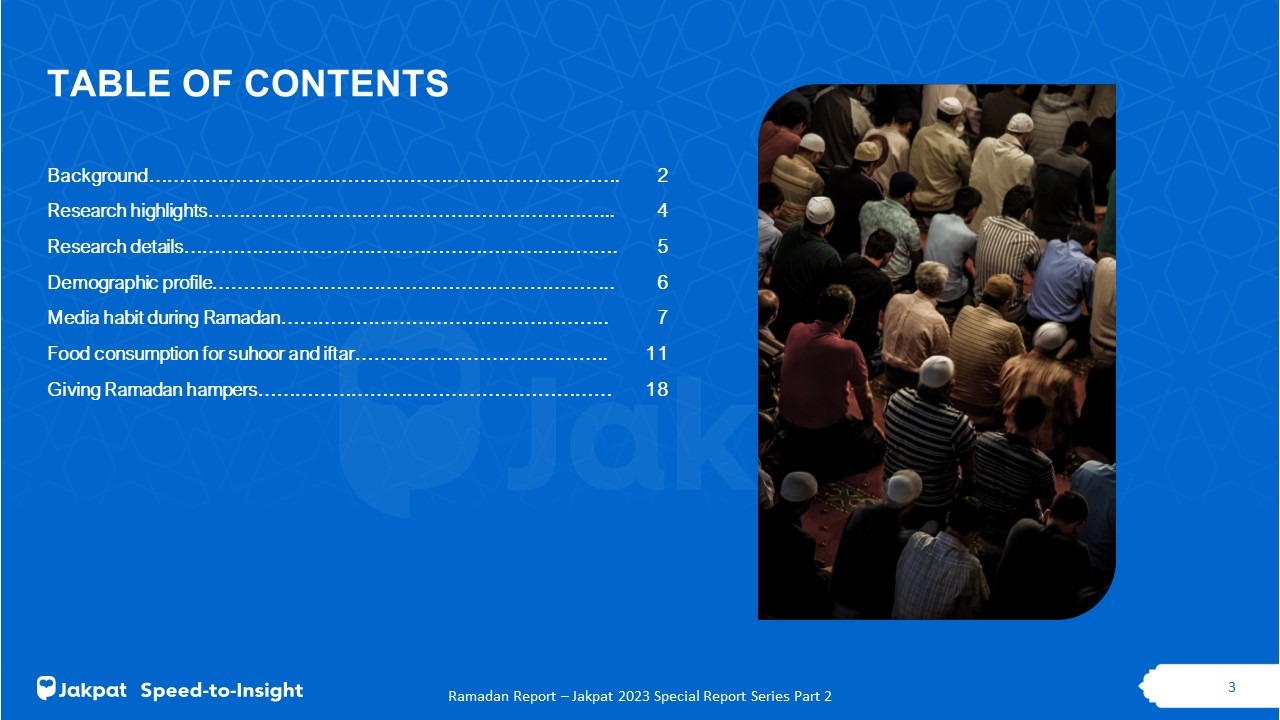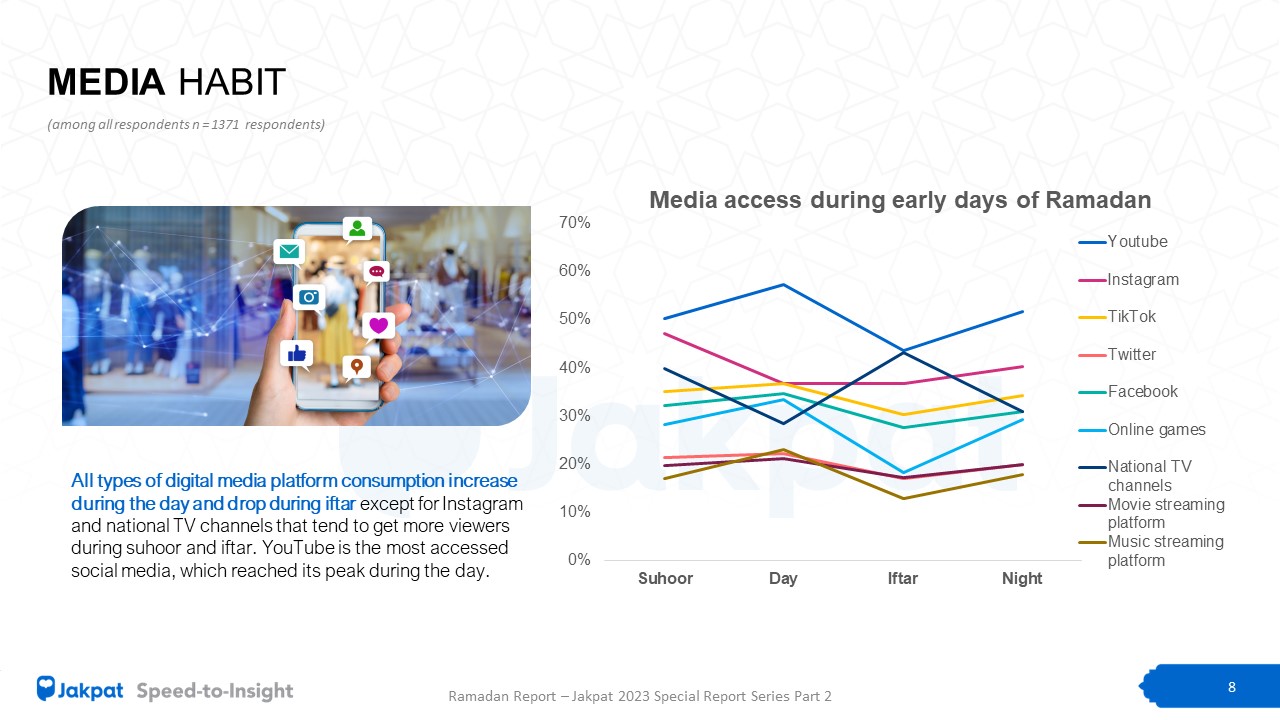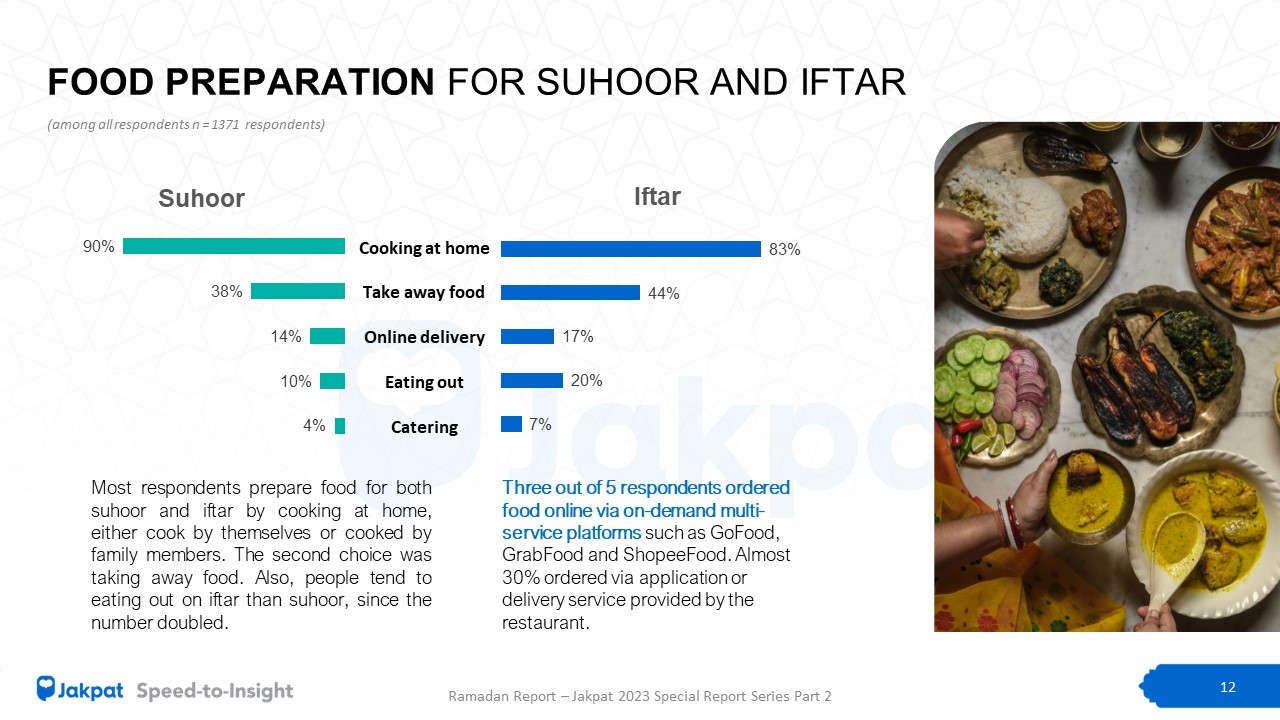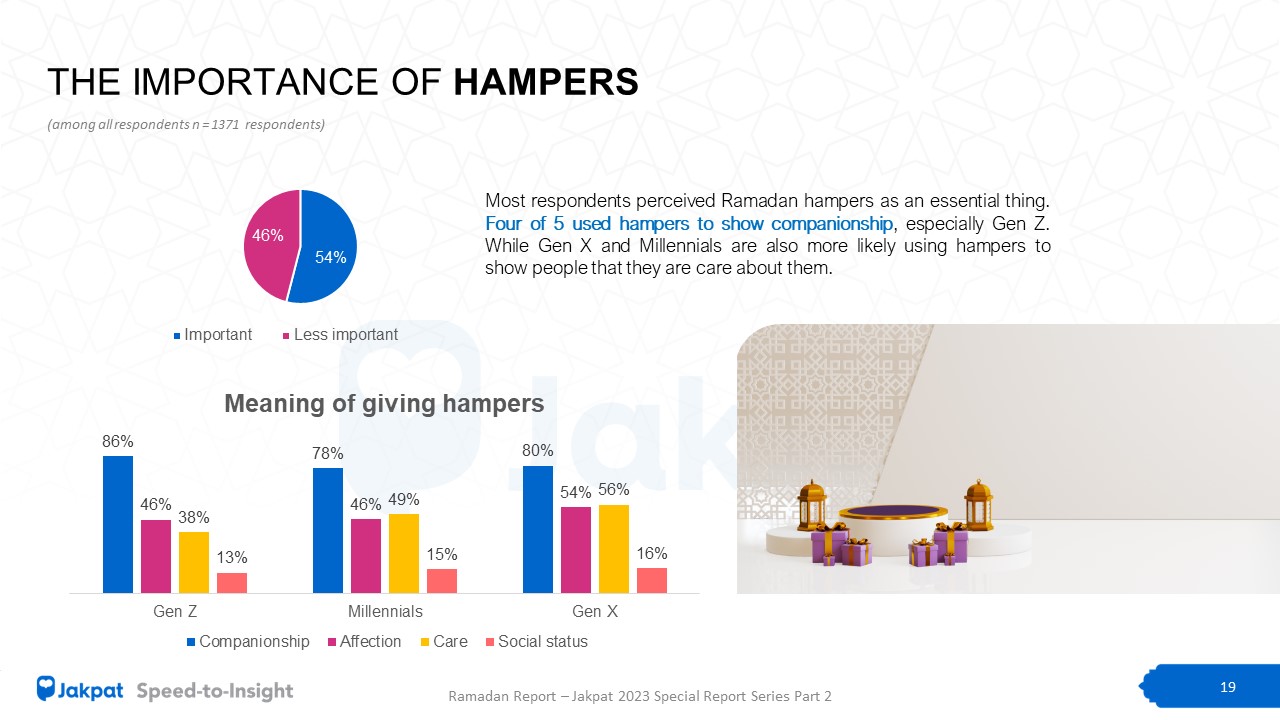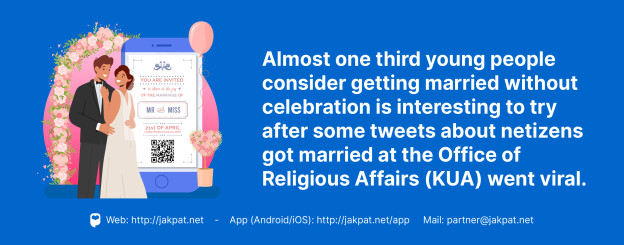A number of changes on Ramadan 2023 occurred such as social media behavior, food consumption, and lifestyle. Preparing hampers have also been done at the beginning of this holy month.
Jakpat conducted a survey to find out how media and eating habits during Ramadan, especially at suhoor and iftar. The report, which involved 1371 Muslim respondents, shows what platforms are happy to use, the most consumed foods, and preparations for giving hampers in the early days of Ramadan 2023.
Youtube as the most accessed media
In general, digital media consumption increased during the day and decreased during iftar. But this habit applied inversely to Instagram and national TV channels. In fact, Instagram users tended to open the application more often at suhoor. On the other hand, Youtube was the most opened application during Ramadan, followed by Instagram and Twitter.
Entertainment and culinary were the most talked about topics in Ramadan 2023. Almost 50% of respondents liked these two topics. Other themes that are also often discussed were sports, religion, and the latest information. Almost all respondents used mobile phonesfor digital activities.
Cooked at home at suhoor and iftar
More than 80% of respondents cooked meals at home for suhoor or iftar, either cooking alone or prepared by family members. The types of dishes that are most often cooked at the beginning of Ramadan 2023 came from fresh food.
Other types of dishes that are most cooked at home at dawn were instant noodles (44%) and frozen foods such as nuggets or sausages (42%). Meanwhile, for iftar, 32% of respondents stated cooking frozen food (32%) and ready-to-eat food that can be eaten immediately after heating or frying, such as spiced chicken (ayam ungkep) or rendang.
“When compared with the Jakpat Ramadan report in 2022, we find that there is a downward trend in the number of people who break their fast outside the home. At the same time, there is an upward trend in the number of consumers who break their fast by cooking at home. This seems to be due to people’s purchasing power which has decreased since the second semester of 2022 yesterday due to inflationary factors, rising prices of basic necessities, to mass layoffs,” said Head of Research Jakpat, Aska Primardi.
“When viewed in more detail, we also find the fact that types of food with more expensive prices such as bread, ready-to-eat food, and frozenfood; Everything has decreased this year. The types of food that remain stable consumed by the majority of people are instant noodles for suhoor, and their own dishes for iftar,” he added.
Home dishes such as tempeh, fried chicken, or vegetable soup; became the most popular types of dishes to order online (online delivery). The second favorite food was fast food for suhoor and Indonesian cuisine (such as meatballs, chicken noodles, and soto) for iftar at the beginning of Ramadan 2023. In addition, those who order food online tended to use multi-platform applications such as GoFood, GrabFood, and ShopeeFood.
Regarding drinks, almost 50% of respondents liked to consume tea-based drinks at dawn and iftar. Tea bags were the most popular type of drink. Then, milk and fruit-based drinks became the next two favorite choices.
The Jakpat survey also found that 3 out of 4 respondents took supplements and vitamins at the start of Ramadan 2023. Vitamin C (37%) and honey (31%) were the most consumed. As many as 64% of respondents consumed it at suhoor.
Hamper Ramadan as a form of friendship
Half of respondents rated Ramadan as important. Four in 5 respondents viewed hampers as a form of friendship, especially Gen Z. Meanwhile, Gen X (56%) and Millennials (49%) tended to see Ramadan hampers as a form of their attention to the people they are given.
Four out of 5 respondents wanted to give a Ramadan hamper this year. A total of 63% planned to give to less than 10 people with the most targets being family and friends.
As many as 63% of respondents intended to order Ramadan hampers online, but they wanted to give them in person (70%). Basic necessities and packaged food & beverages were the most popular types of goods as hamper contents with a percentage of around 60% each. Regarding the budget, almost 45% of respondents allocated Rp100-200 thousand for each Ramadan hamper given with an average of Rp186,848.
“The impact of decreasing people’s purchasing power is also seen here, that in 2022 in the Jakpat report, the majority of people prefer to give cookies as an Eid al-Fitr hamper. This year the majority of people prefer to give basic necessities.. So it seems that in the current economic situation, people are refocusing on meeting their basic needs first,” concluded Aska.
Get the details on our report here.



